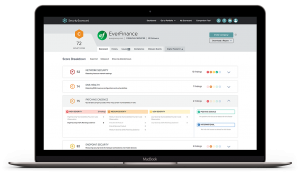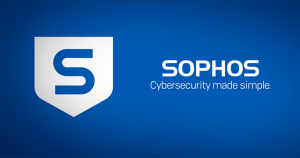The New Service Providers Are Corporate Enterprises – Cloudera Goes Commercial For Enterprises
Hello Enterprise 2.0 World!!
Mark the calendar – today the enterprise is moving to be the next service provider for consumers – the business user or worker.
The biggest and fastest growing trend we are monitoring here on SiliconANGLE is the new Enterprise 2.0 around “converged infrastructure” meets “virtualization and cloud computing” – driving all that is users, applications, and data (both big data and little data).
It’s not about SaaS any more. In fact, Marc Benioff said publicly that he is completely re-engineering this entire product to meet the new forces in the market. Salesforce is basically throwing away a decade of development because it’s outdated. That speaks volumes because Salesforce is a leading cloud vendor, can you imagine how out of touch most corporate enterprises are?
Big Problem – Too Much New Data Too Fast
The big problem facing growing enterprises is that they are flooded with more new types of data. Application and new user data from mobile devices and applications, are changing the mandates from CEOs and CIO of medium and large enterprises. This new world of “big data” is putting pressure on the enterprise to develop both business and technical model innovation strategies like nothing seen before. Hence the traction of the public and private cloud debate.
Open Source Big Data Platform Hadoop Becomes “Enterprise Ready at Scale”
Today, Cloudera, the leader in commercial Hadoop, is having one of their biggest launched today in the young company’s history. They are announcing two major products that make Cloudera the preferred platform for enterprise adoption of the new way to manage “big data” with open source Hadoop.
1) Cloudera Distribution for Hadoop version 3 which is a significantly enhanced verision of Hadoop that makes it “Enterprise Ready”. Additionally, they are opening up some of their technology as open source projects as a way to give back to the Hadoop open source community. Cloudera expands on the core Apache, HTFS, and MapReduce.
2) Cloudera Enterprise, proprietary technology and tools for managing, monitoring, maintaining, deploying, and operating Hadoop clusters at scale. Cloudera Enterprise tools will be available via a subscription service.
Hadoop Is Growing In Popularity For Large Scale Data Driven Enterprises
Hadoope was based originally from Google’s proprietary software infrastructure. Hadoop is a open source product designed to manage commoditiy machines in an intelligent way that combines all the machine into one big super compute and storage system. Hadoop can handle massive amounts of data across a network of distributed low cost machines.
Hadoop was previously reserved for the elite online content service providers – think Google, Facebook, and Yahoo like datacenters. Because of the success of Hadoop for those Internet giants, Hadoop and now Cloudera has become a defacto go to platform for big Internet portals to handle the massive amount of daily data.
Here is a video of the CEO of Cloudera Mike Olson who talks about their big announcement
My Angle on Cloudera’s News
What’s impressive about Cloudera is that they are pushing innovation for business benefits on top of an open source franchise Hadoop without doing a “land grab”. In other words they are building reliability, performance, and sale on top of the Hadoop base and Cloudera is giving back to the community. Sure Cloudera is in business to make money, but they are doing it the right way.
I’ve had the chance to spend some time with the Cloudera folks over the past month and had a chance to meet the founders and executive staff. These guys are the A-Team of BIG DATA.
Bottom line: Open source programs like Hadoop and companies like Cloudera are pushing the envelope on the most important trend (data and cloud). It’s changing the game in data warehousing and business intelligence.
Enterprises Are Transforming into Internet Service Providers – Hello Cloud
What Cloudera is announcing today is not only improvements to their products, but more importantly validation of something that I’ve been seeing for the past 18 months – Enterprises are building large scale data platforms that look more like Google, Facebook, and Yahoo and less like traditional IT.
I’ve written about this new paradigm around data as relates to large mobile providers who are reengineering their infrastructures. I call it the “data innovation cycle”.
The big problem facing growing enterprises is that they are flooded with more new types of data. Application and new user data from mobile devices and applications, are changing the mandates from CEOs and CIO of medium and large enterprises. This new world of “big data” is putting pressure on the enterprise to develop both business and technical model innovation strategies like nothing seen before. Hence the traction of the public and private cloud debate.
Data = Better User Experience; Better User Experience = Monetization
As we’ve been saying at SiliconAngle for over a year now, data is becoming the most important thing for developers and now for advertisers especially in mobile. Data drives a better user experience and a better user experience drive monetization. Data and data analysis is at the heart of this value proposition.
Look at the search industry in say Google. Having access to data enabled Google to build a quality search product and ad network. With Google constantly iterating their data quality they were able to consistently build better algorithms to present users with a compelling search product.
In mobile and smartphones search doesn’t really work like on the wbe due to the screen size and real time nature of mobility. So display advertising hold the best seat at the table with respect to the search opportunity on mobile. The display ad and applications will be the vehicle where innovation (e.g. like search in late 90s) around consumer experience will occur.
The result for consumers will look like some automated cloud service that will do most of the work and then just show up in the display of the smartphone.
Data Innovation Cycle – SmartPhones Enabled This Phenomenon
With the creation of the iPhone and the iPad the industry is seeing massive change. A paradigm that I haven’t seen since the disruption of the browser. I expect to see some major game changing user experiences over the next 10 years. I call it the mobile innovation cycle – enabled by Apple’s iPhone a few years ago.
My analogy: What the iPhone will do for mobile today is what the original Macintosh did for computing back in 1984- change the game in terms of user expectations around the required experience. Enterprise computing is changing to look more like the iPhone and iPad market.
Below is an illustration of what is happening. Rapid innovation around applications that is spawn new data. This new data is the powerful new disruptor or Data Is The New Developer Kit of which I’ve written in the past many times. How developers leverage data will determine how to make their applications more successful.
How they iterate the data feedback cycle is key. I call it the Mobile Application Innovation Cycle.
 The iPhone (now Android) kicked off a massive development boom for applications in this case millions of apps. So what we have here is a “long tail” of applications. These long tail apps are creating a data tsunami and this data is very valuable. The opportunity is to make sense of the data and move that back through to the apps and the consumer. This cycle is very rapid and will create an opportunity for platforms that can leverage the data to provide a better user experience.
The iPhone (now Android) kicked off a massive development boom for applications in this case millions of apps. So what we have here is a “long tail” of applications. These long tail apps are creating a data tsunami and this data is very valuable. The opportunity is to make sense of the data and move that back through to the apps and the consumer. This cycle is very rapid and will create an opportunity for platforms that can leverage the data to provide a better user experience.
This is new data never seen before so it’s a big opportunity.
Enterprise Going Consumer – Going Once Twice – GONE
The Cloudera announcement highlights the growing trend in Enterprise 2.0 right now which is “converged infrastructure” meets “virtualization and cloud computing”. Driving all this is new users, applications, and data (both big data and little data) behaviors and changes in technologies.
1) Devices: Blackberry is under pressure as the leader in the business phone; new smartphones iPhone and Android will fit this market;
2) Virtualization, Cloud, and Software as a Service: companies using Microsoft Exchange will feel the pressure to move to Google or equivalent platform for all work related productivity; SAP and Oracle on the high end; IBM and HP for the medium sized enterprise; Video conferencing like Skype
3) Mobile Apps and Networking: edge based software will be tied directly to network computing paradigms; this includes the home and consumer market.
4) Smart Storage and Compute Systems: companies building open source and scalable systems like Cloudera and EMC will be the central theme in making data the new corporate and personal asset; this will create some big changes how the market is structured
5) Social Media: this is not what people think it is; this isn’t about being popular on Twitter or having a Facebook page. Instead this is about new emerging brands and technologies from blogging, video, collaboration, real time data, data warehousing/business intelligence, and entertainment among others.
6) Datacenter Operating System: this is the area that will be very fun and interesting to watch because it’s a big money market for the existing whales like IBM, HP, and others. It’s changing. The datacenter is a battleground for new models. In particular one that is very trendy right now is the optimization of components in the datacenter to construct a datacenter operating system.
The future is unwritten for the Entrprises. It’s a fun time.
A message from John Furrier, co-founder of SiliconANGLE:
Your vote of support is important to us and it helps us keep the content FREE.
One click below supports our mission to provide free, deep, and relevant content.
Join our community on YouTube
Join the community that includes more than 15,000 #CubeAlumni experts, including Amazon.com CEO Andy Jassy, Dell Technologies founder and CEO Michael Dell, Intel CEO Pat Gelsinger, and many more luminaries and experts.
THANK YOU










